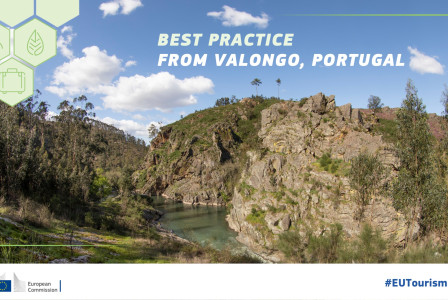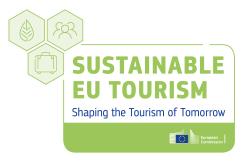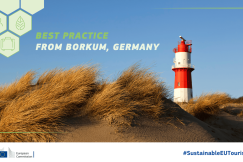Best practices
18 September 2025
Sustainable EU Tourism project - best practice: Valongo
Best practices
18 September 2025
Cultural tourism
Ecotourism
Education tourism
+6 more
Login / create an account to be able to react
-
67

Valongo, Portugal, has positioned itself as a nature-based tourism destination by integrating conservation, education, and community involvement. Through EU-funded projects and local initiatives, the city protects its natural resources while enhancing its tourism offer, ensuring sustainable growth rooted in environmental stewardship
Sustainable EU Tourism project
Topics
Portugal
Destination Management & Marketing Organisations
Local Authorities
Regional Authorities
-
Specific types of tourism
-
-
Cultural tourism
-
Ecotourism
-
Education tourism
-
Mountain tourism
-
Rural tourism
-
-
Transition Pathway Strategic Areas
-
-
Best practices, peer learning and networking
-
Funding and support measures
-
R&I on climate-friendly tourism
-
-
Business activities
-
-
Other
-
Share
Valongo, Portugal, has been recognised as a best practice by the Sustainable EU Tourism project for its strong focus on linking nature conservation with sustainable tourism development.
Located near Porto and part of the Porto Mountain Park, the municipality faces the dual challenge of relying on natural resources while ensuring their long-term protection. To address this, Valongo joined forces with neighbouring municipalities in 2016 to create the Association of Municipalities of Porto Mountains Park, focused on managing protected areas and implementing EU-funded projects aimed to restore native ecosystems, strengthen climate adaptation, and raise awareness through citizen engagement.
Valongo has also invested in the rehabilitation of the heavily polluted Leça River through the Association of Municipalities of the Leça River Corridor, supported by REACT-EU funding. Actions include waste removal, controlling invasive species, and protecting riverbanks through natural engineering solutions.
Furthermore, the municipality actively involves both residents and tourists in conservation through educational games, composting, tree planting, river cleaning, and initiatives like the Centre for Environmental Interpretation and Roman Mining, which highlights Valongo’s natural and cultural heritage.
Valongo’s strategy shows how destinations can align tourism with environmental sustainability by investing in nature-based activities, EU co-funded projects, and strong community involvement. This approach strengthens biodiversity, enhances the tourism offer, and ensures that the preservation of natural resources remains at the heart of local development.
For more details on the key challenges the destination has faced, and the solutions implemented to address them, please refer to the attached document.
Documents
Comments (0)
Related content
See also
Sustainable EU Tourism - Key challenges and best practices
- Categories
- Coastal, maritime and inland water tourism Cultural tourism Ecotourism +64 more
LIFE WAT’SAVEREUSE: Promoting water conservation and reuse in tourism
- Categories
- Coastal, maritime and inland water tourism Cultural tourism Ecotourism +41 more
SUSTOUR: Completed initiative boosting competitiveness and sustainability of European SMEs
- Categories
- Coastal, maritime and inland water tourism Cultural tourism Ecotourism +17 more






